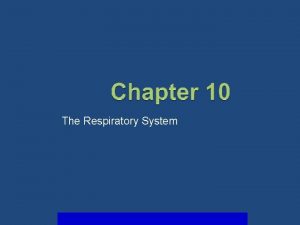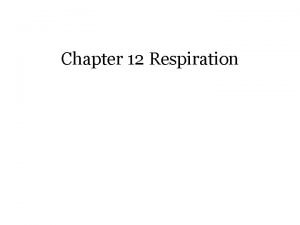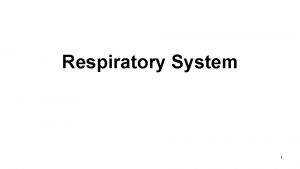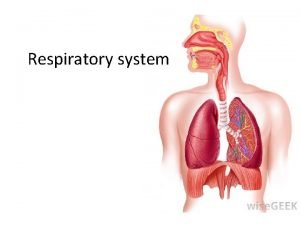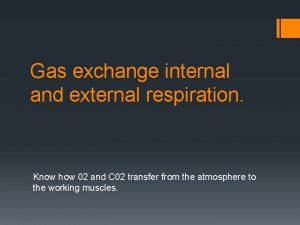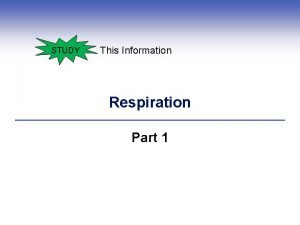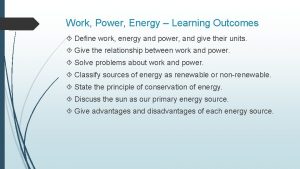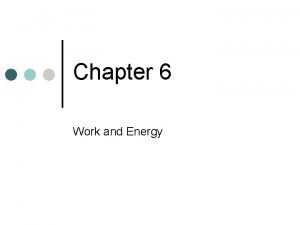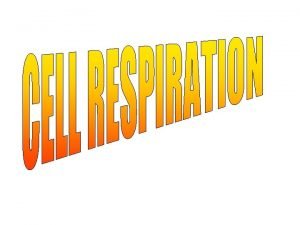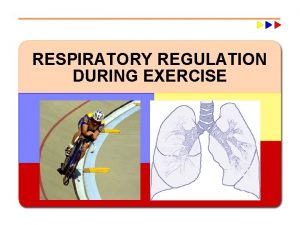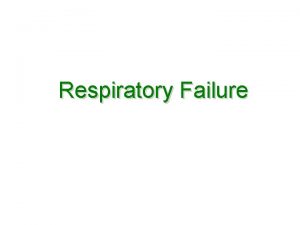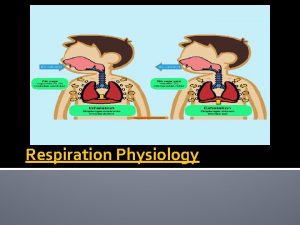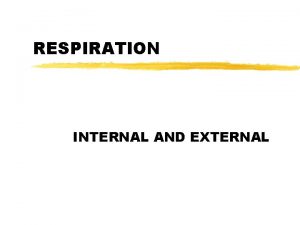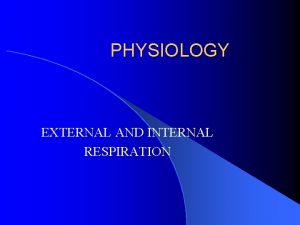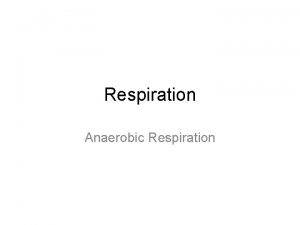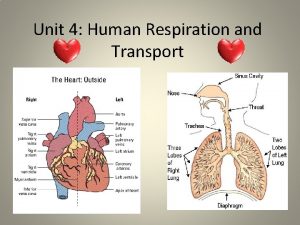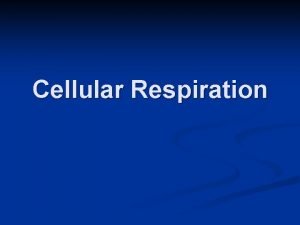External and Internal Respiration Learning Outcomes Analyse internal


















- Slides: 18

External and Internal Respiration

Learning Outcomes: Analyse internal and external respiration – State location – Describe conditions (ph, temperature) – Describe roles of oxyhemoglobin, carbaminohemoglobin, reduced hemoglobin, bicarbonate ions, carbonic anydrase – Write Chemical equations for external and internal respiration

4 Levels of respiration • Breathing • External respiration- in the lungs (what gas exchange occurs here? ) • Internal respiration - in the tissues (what gas exchange occurs here? ) • Cellular respiration - in the mitochondria of cells (what is used and produced? )

Fig. 15. 8

Fig. 15. 4




Fig. 13. 15

1. External (lungs): O 2 • O 2 diffuses from the alveoli into the blood (why? ) What molecule in the blood does O 2 bind to? • O 2 binds to hemoglobin to form oxyhemoglobin • Hb + O 2 Hb. O 2

• Binding of O 2 to hemoglobin occurs best at lower temperature, higher p. H and higher PO 2 (oxygen pressure) of the lungs

Fig. 15. 9

2. Internal (tissues): O 2 • O 2 dissociates from Hb, leaving deoxyhemoglobin • Hb. O 2 Hb + O 2 • Bond is weaker due to higher temperature, lower p. H and lower PO 2 • O 2 diffuses into tissue fluid and cells, where it is used for cellular respiration

3. Internal (tissues): CO 2 What process produces CO 2? • CO 2 is produced by cellular respiration in all cells • CO 2 diffuses out of cells into tissue fluid, and then into capillaries • A small amount combines with Hb to form carbaminohemoglobin • Hb + CO 2 Hb CO 2

• Most CO 2 combines with H 2 O to form carbonic acid, which dissociates to form hydrogen ions and bicarbonate ions: • CO 2 + H 2 O H 2 CO 3 H+ + HCO 3 • This reaction is catalyzed by the enzyme carbonic anhydrase (found in red blood cells)

• HCO 3 - is carried in the plasma • H+ is picked up by hemoglobin, forming reduced hemoglobin: • H+ + Hb HHb • This prevents too much acidity in the blood

4. External (lungs): CO 2 • • Bicarbonate ions release CO 2 : H+ + HCO 3 H 2 CO 3 H 2 O + CO 2 Carbaminohemoglobin releases CO 2 diffuses out of the capillaries into the alveoli, to be breathed out

 Internal respiration vs external respiration
Internal respiration vs external respiration Intrapleural pressure
Intrapleural pressure Learning objectives of respiratory system
Learning objectives of respiratory system Differentiate between external and internal respiration
Differentiate between external and internal respiration Meduula
Meduula Cellular respiration reactants
Cellular respiration reactants External vs internal respiration
External vs internal respiration External vs internal respiration
External vs internal respiration Pulmonary capillary
Pulmonary capillary Planning goals and learning outcomes
Planning goals and learning outcomes Learning outcomes of direct and indirect speech
Learning outcomes of direct and indirect speech Purpose of output devices
Purpose of output devices Learning outcomes of work and energy
Learning outcomes of work and energy Learning objectives of profit and loss
Learning objectives of profit and loss Learning objectives of work and energy
Learning objectives of work and energy Roman number 5200
Roman number 5200 Meaning of cellular respiration
Meaning of cellular respiration External respiration
External respiration Classification of respiration
Classification of respiration


